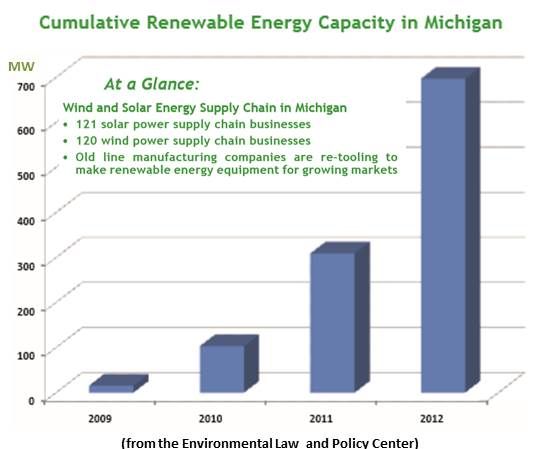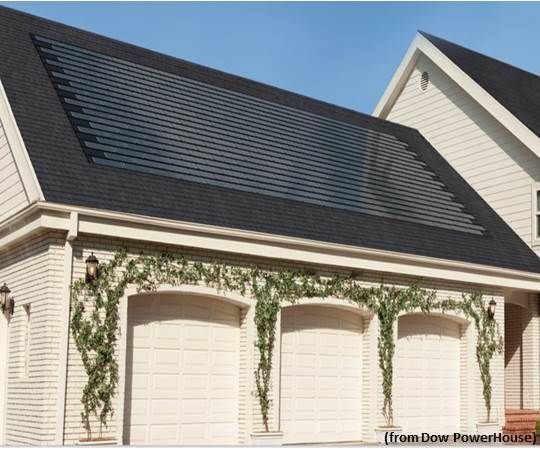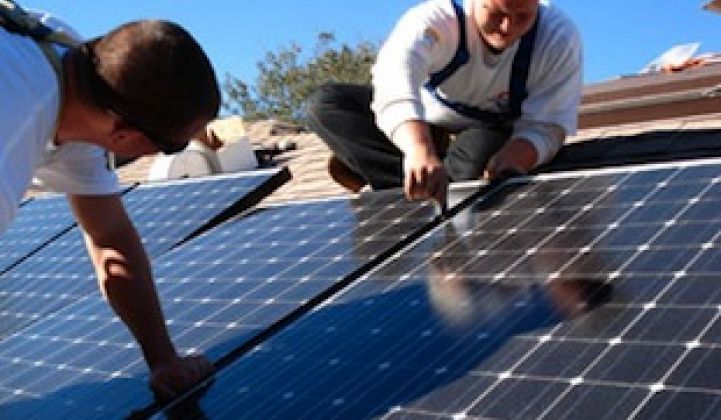Michigan’s renewable portfolio standard (RPS) requires the two major utilities, Consumers Energy (NYSE:CMS) and Detroit Edison (NYSE:DTE), to obtain 10 percent of their power from renewables by 2015.
“They are well on their way to achieving the requirement, but it is 90 percent wind. As part of meeting the standard, each utility agreed to include some residential and commercial solar PV pilot projects and they took different approaches," explained Great Lakes Renewable Energy Association (GLREA) Executive Director John Sarver.
Under Consumers’ original 2008 2-megawatt Renewable Energy Program, customers received a twelve-year contract at a fixed price ($0.65 to $0.525 per kilowatt-hour for residential, $0.45 to $0.375 per kilowatt-hour for commercial) for each kilowatt-hour generated. With 102 systems installed, Consumers customers had filled out the program by June 2011.
Detroit Edison’s initial SolarCurrents pilot program was for 20 megawatts, five consumer-owned and fifteen DTE-owned. For customer-owned systems, SolarCurrents provided an upfront benefit of $2.40 per watt, estimated to be half the system cost, as well as an $0.11 per kilowatt-hour monthly payment for twenty years. The 20 megawatts were committed to by May 2011.
“DTE has completed the 15 megawatts or is on its way,” Sarver said of the DTE-owned portion. “They lease rooftop space from their customers. They pay lease payments to colleges and businesses and schools to use their space for systems they own and operate.”
“The Michigan Public Service Commission (MPSC) and stakeholders applied significant pressure for the two utilities to continue their programs,” Sarver said.
Consumers added another 3 megawatts, 1,500 kilowatts for commercial and 1,500 for residential systems, with fifteen-year contracts at a lower rate ($0.20 for commercial, $0.26 for residential).
DTE has proposed an expansion of SolarCurrents to cover an additional 2 megawatts, 1.5 megawatts residential and 0.5 megawatts commercial. Remuneration will be $0.20 per watt upfront and $0.03 per kilowatt-hour monthly for residential and $0.13 per watt and $0.02 per kilowatt-hour monthly for commercial. The contracts, for systems of up to 20 kilowatts, will run through 2029.

Michigan’s RPS, its current net metering program, its energy efficiency standard and the solar pilot programs were the result of former Democratic governor Jennifer Granholm’s 2008 initiatives. But the 2010 Tea Party wave shifted Michigan politics.
“We had a ballot initiative last November that would have increased our RPS to 25 percent by 2025,” Sarver said. “It did not pass.”
“Governor Rick Snyder, who would be considered a moderate Republican, recently initiated a process to reconsider the future of the RPS during 2013,” Sarver said. “Both houses of the legislature are controlled by Republicans. But the Governor may be more supportive of renewables than the legislature because he is from a computer business background and is used to new technology issues.”
The utilities say solar is an expensive resource, Sarver said. “GLREA and the MPSC take the position that it is more expensive than wind but it adds diversity and other advantages. The problem is the benefits, like PV’s peak load value, aren’t recognized in utility planning and procurement processes.”
But, he said, “because of the falling PV cost and the utility pilot programs, there is activity. Installers are keeping quite busy. We are installing 500-kilowatt projects and people are talking about 1-megawatt projects. It’s changed significantly in the past five years.”
Michigan’s solar installation business is changing, Sarver said. “We have bigger firms, electrical contractors and roofing companies, getting into the business. We have electrical contractors and roofing companies for whom solar and wind are 10 percent to 15 percent of their business. The company that installed my roof-integrated system, Luma Resources, was a family roofing company for more than 25 years.”
To help the new installers cut costs to consumers, Sarver said, a Michigan nonprofit clean energy coalition is working to streamline permitting and other PV installation soft costs. GLREA is also working to clear permitting barriers and find a utility sponsor for a community solar program.
Michigan’s growing manufacturing base was recently calculated at 121 companies and businesses.
“We have Dow Solar (NYSE:DOW), which makes the PowerHouse solar shingle,” Sarver said. “The company had been focusing on bigger markets with better incentives, but it recently identified two Michigan companies that will sell its products, Cobblestone Homes, a home builder, and Kearns Brothers, a roofing company.”

Michigan also is home to Hemlock Semiconductor, a major international polysilicon supplier, Poly Panel, a new manufacturer of a dual thermal-electric panel, Renovo Power Technology, a new inverter manufacturer, and two tracking system builders, Sunteer, a subsidiary of automotive supplier Nexteer, and Patriot Solar.
“There are people in Michigan who say solar doesn’t work. The economics in Michigan are not as compelling as in other states, but that doesn’t mean it doesn’t work,” Sarver said. “Solar gives us a more diverse resource base, and distributed generation has a lot of benefits. The market is growing in a significant way. There is a lot that needs to be done. But we are making progress.”



